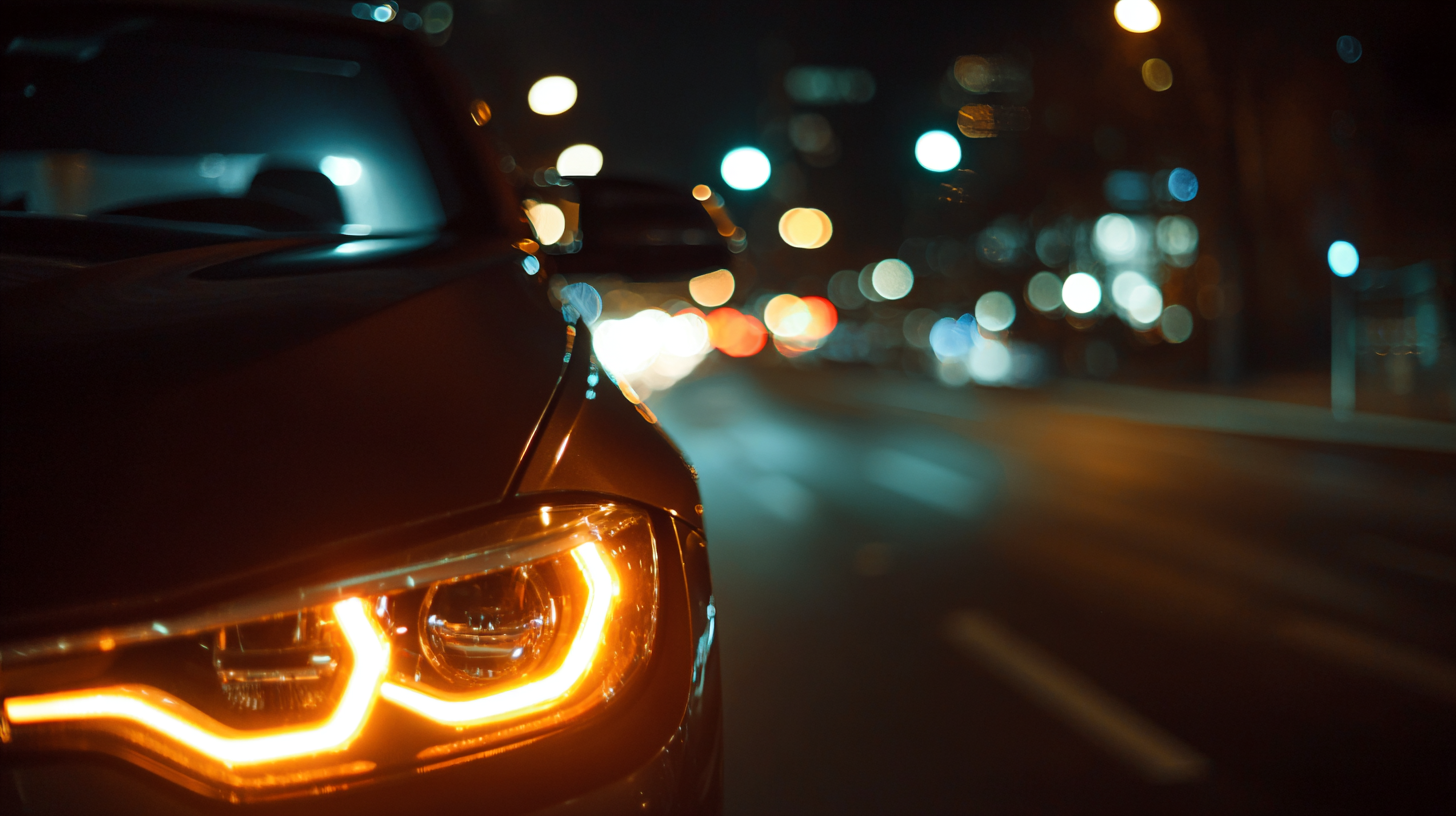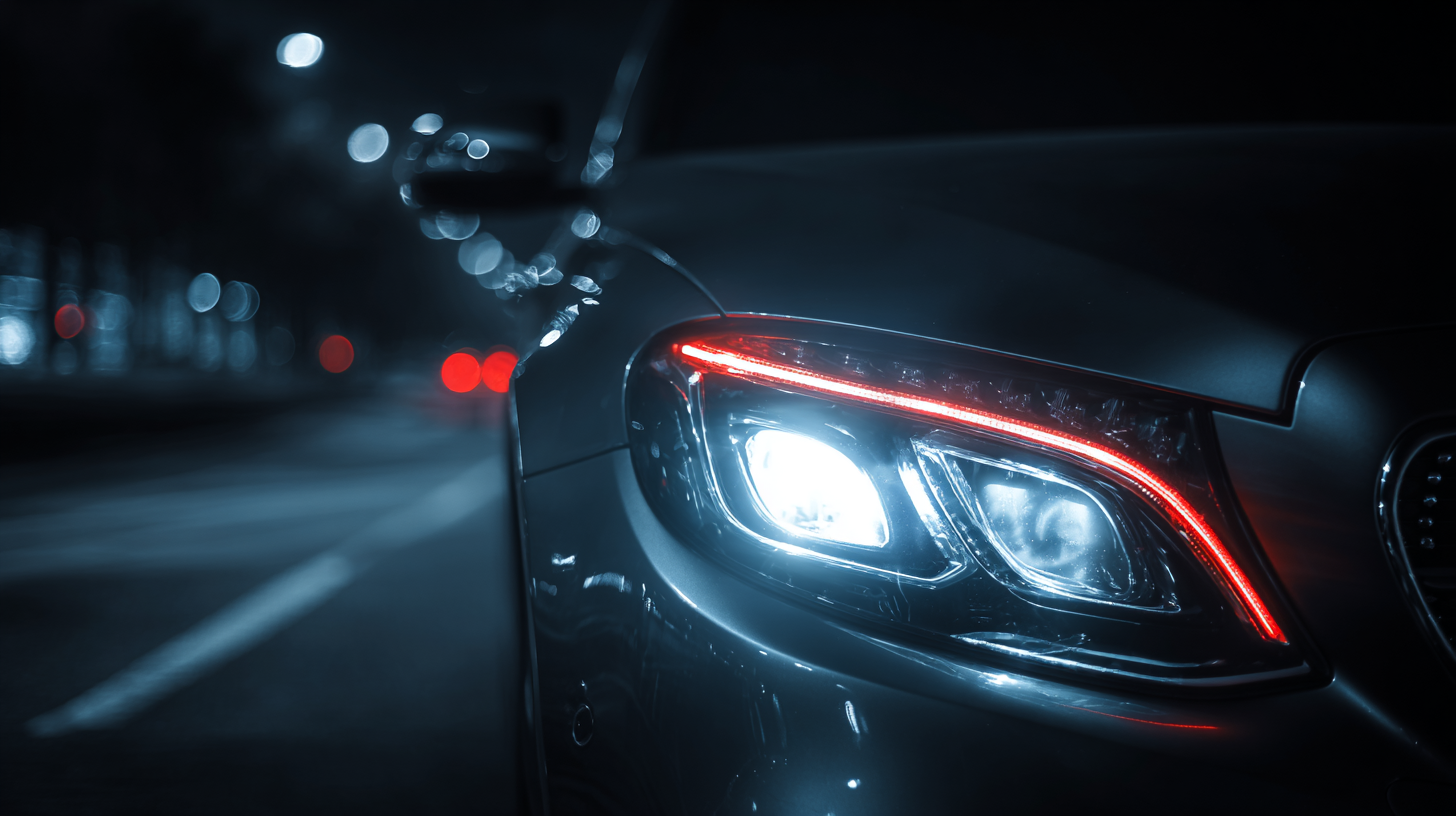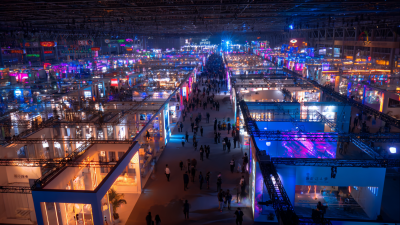As the automotive industry continues to evolve, one area that is rapidly undergoing transformation is automotive lighting products. Recent studies indicate that the global automotive lighting market is projected to reach approximately $37.5 billion by 2026, growing at a CAGR of 6.5% from 2021. This surge in growth reflects increasing consumer demand for advanced lighting solutions that enhance safety and visibility during night driving. Innovations in LED technology and adaptive lighting systems are set to revolutionize how vehicles illuminate the road ahead, addressing the critical need for improved nighttime visibility. Additionally, the integration of smart lighting technologies and automation is altering traditional paradigms, making it essential for manufacturers and consumers alike to stay informed about the latest developments in automotive lighting products. This article will explore key advancements and future trends shaping the industry, ensuring drivers are well-equipped for safer night driving experiences.

Driving at night presents unique challenges, primarily due to glare from oncoming vehicles and the inconsistent visibility provided by traditional headlights. However, recent advancements in automotive lighting technologies are poised to revolutionize nighttime driving experiences. The automotive lighting market is expected to grow significantly, reaching approximately $58.8 billion by 2033, driven by innovations in LED technology, smart systems, and the rise of electric vehicles. Adaptive headlights, which adjust the beam pattern based on the vehicle's speed and steering angle, enhance visibility while reducing glare for oncoming drivers.
When considering a vehicle purchase, it's essential to understand these advancements. Look for models equipped with advanced lighting options such as matrix LED headlights, which offer superior illumination and minimize the risk of blinding other drivers. Additionally, sustainable LED technologies not only improve efficiency but also lower energy consumption, making them a more environmentally friendly choice.
Tips for optimal night driving: Always ensure your headlights are clean and properly aligned to maximize effectiveness. Invest in anti-glare sunglasses for additional comfort and visibility during those late-night drives. By staying informed about these emerging technologies, you can make better choices that enhance your driving safety and experience.
| Technology Type | Key Features | Benefits | Projected Adoption Year |
|---|---|---|---|
| Adaptive LED Headlights | Automatically adjust beam pattern based on driving conditions | Improved visibility, reduced glare for oncoming drivers | 2025 |
| Laser Headlights | Uses laser technology to project a high-intensity beam | Enhanced range and clarity, energy-efficient | 2024 |
| Matrix Headlights | Utilizes multiple LEDs to individually control light beams | No blinding effect while maintaining maximum illumination | 2023 |
| Smart Lighting Systems | Integrates sensors and AI to optimize lighting | Adapts to changing environments, enhances safety | 2026 |
| Night Vision Assist | Augmented reality overlays for enhanced visibility | Improved hazard detection, reduces accident risk | 2027 |
Adaptive lighting systems are crucial in enhancing road safety, particularly as the automotive industry shifts towards more advanced lighting technologies. The global automotive intelligent lighting system market was valued at approximately USD 7.45 billion in 2024 and is projected to reach USD 12.27 billion by 2030. This growth underscores the increasing demand for smarter, more efficient lighting solutions that can adapt to various driving conditions.
Innovations such as adaptive headlights are at the forefront of this revolution. These systems can automatically adjust the intensity and direction of headlights based on factors like vehicle speed, steering angle, and ambient light conditions, significantly improving nighttime visibility. As a result, they play a vital role in reducing the likelihood of accidents at night, a time when road safety is most critical. Furthermore, the rise of energy-efficient LED technologies is reshaping the lighting landscape, with the automotive lighting market expected to reach USD 32 billion by 2030, largely driven by these advancements and the growing preference for sustainable solutions.

The advancements in automotive lighting, particularly with LED and laser headlights, are transforming the night driving experience. According to a report by MarketsandMarkets, the global automotive lighting market is expected to reach $36.3 billion by 2025, driven largely by innovations in technology. LED headlights, in particular, offer remarkable benefits, including improved visibility, longevity, and energy efficiency. Research indicates that LED headlights can last up to 25,000 hours, significantly outpacing traditional halogen bulbs, which typically last around 1,000 hours. This longevity not only reduces replacement costs but also minimizes environmental waste.
Moreover, laser headlights are emerging as the new frontier in automotive lighting technology. With the ability to produce a more intense and focused beam of light, they enhance visibility during night driving, providing up to 1,000 lumens of brightness. A study published by the Society of Automotive Engineers highlights that vehicles equipped with laser headlights can illuminate objects over 600 meters away, nearly triple the distance of conventional systems. This increased visibility is crucial for safety, particularly in rural or dimly lit areas where the risk of accidents is higher. As these technologies continue to evolve, they promise to make night driving not only safer but also more efficient.
This chart compares the visibility range of LED and Laser headlights during night driving. As illustrated, Laser headlights offer a superior visibility range of approximately 300 meters compared to 200 meters for LED headlights, making them a promising innovation for enhancing night driving safety.
In the quest for safer night driving experiences, leading automotive brands are stepping up their game with innovative lighting technologies that enhance visibility and reduce accidents. Brands like Audi, BMW, and Mercedes-Benz are at the forefront of this revolution, introducing advanced solutions such as adaptive headlights and matrix LED systems. These intelligent lighting products adjust automatically to the driving conditions, providing optimal illumination around curves and during adverse weather conditions, thus ensuring a safer journey for drivers and passengers alike.
Moreover, companies such as Ford and Toyota are exploring the use of laser and OLED technologies to create brighter and more power-efficient lighting systems. These state-of-the-art lights not only improve visibility but also add a striking visual element to the vehicle's design. With features like automatic high beam adjustments and glare-free high-beam technology, these innovations represent a significant leap forward in automotive lighting, making night driving not only safer but also more enjoyable. As these automotive giants continue to lead the charge, consumers can expect a future where navigating dark roads is simpler and more secure, thanks to cutting-edge lighting advancements.
The future of automotive lighting is poised for remarkable advancements in the next decade, driven by technological innovations and the growing emphasis on safety. One of the most exciting trends is the development of adaptive lighting systems, which can automatically adjust brightness and focus based on driving conditions. These systems utilize sensors and cameras to detect oncoming vehicles and pedestrians, ensuring optimal visibility without causing glare. As a result, drivers will experience enhanced safety and comfort during nighttime travel.

Another significant trend in automotive lighting is the integration of smart technology. Vehicles will increasingly feature connected lighting systems that communicate with other car components and external elements, such as traffic signals and road conditions. This connectivity can enhance navigation by providing more accurate information on road hazards and optimizing lighting for various environments. Moreover, the rise of energy-efficient LED and OLED technologies promises to reduce power consumption while improving the quality of light, paving the way for environmentally friendly and sustainable automotive design.





